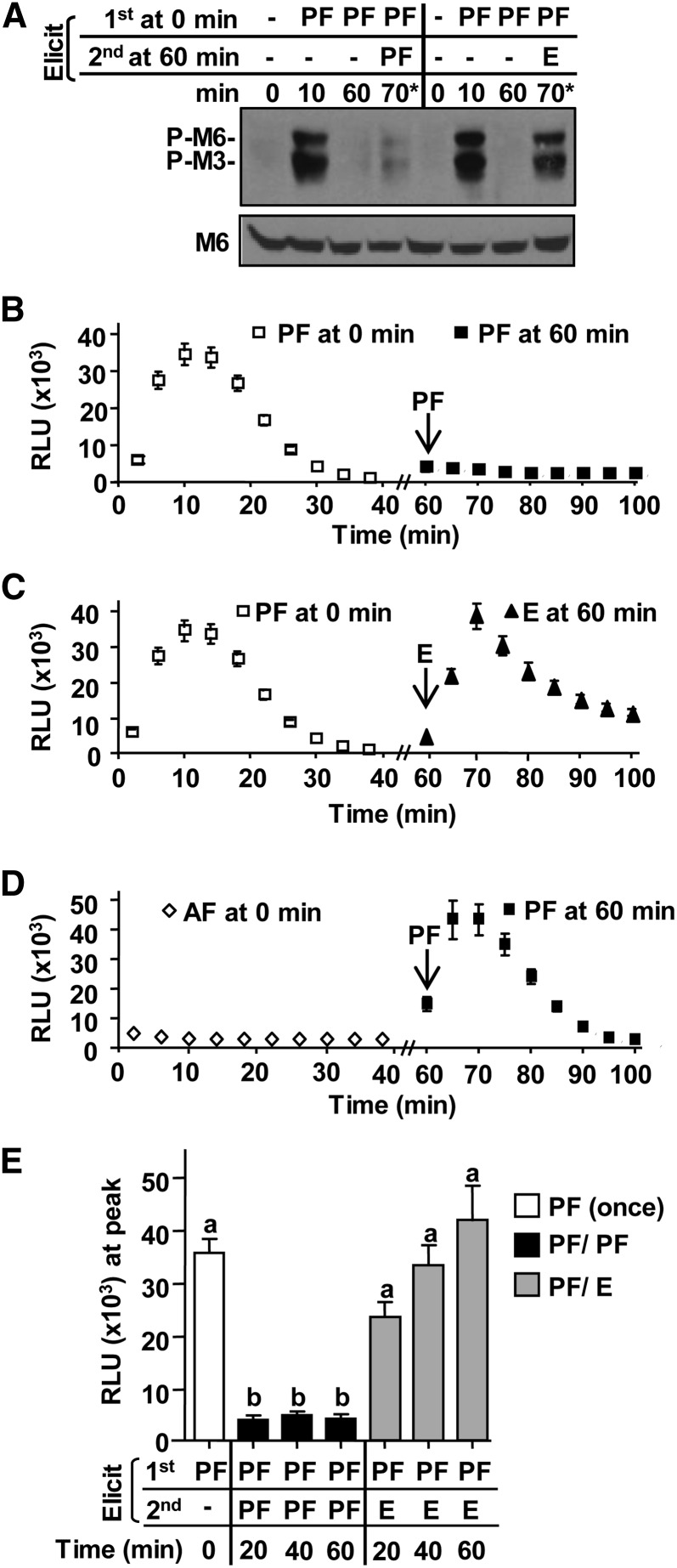Figure 2.
Ligand-induced desensitization to flg22 is PAMP and time dependent. A, Specificity of reelicitation of MAPK phosphorylation. Col-0 leaf strips were first elicited with 0.1 µm flg22 (PF) for 0, 10, or 60 min. Samples denoted 70* were reelicited at 60 min for 10 min with 0.1 µm of indicated PAMP; minus (–) denotes no elicitation at given time point. Total protein extracts were probed with αMPK6 (M6) or αP-p44/42 MAPK to assess MPK6 protein levels or phosphorylation of MPK6 (P-M6), MPK3 (P-M3), and an unknown MPK (P-M?). B–D, Specificity of ROS reelicitation. For first elicitation, Col-0 leaf discs were elicited with 0.1 µm of indicated PAMP at 0 min (white symbols), washed, and reelicited with indicated PAMP at 60 min (arrow; black symbols; n = 20 per treatment). All three ROS experiments in B to D were set-up in the same 96-well plate at the same time to allow direct comparison. E, Signaling competency between 20 and 60 min. All Col-0 leaf disc halves (n = 96) were elicited at 0 min with 0.1 μm active flg22 (white bar). After 15 min, all tissue was washed. Subsets of tissue (n = 16 per treatment) were then reelicited a second time at 20, 40, or 60 min with indicated PAMP. White bar represents ROS peak production 10 to 12 min after the first elicitation at 0 min (PF once). Black (PF/PF) or gray bars (PF/E) represent ROS peak production 10 to 12 min after reelicitation of tissue subsets for a second time at indicated times with active flg22 or elf26, respectively. To allow for direct comparison, all treatments in E were set-up in the same 96-well plate at the same time. Values are mean ± se, and means with different or the same letters are significantly different or not significantly different, respectively (two-tailed Student’s t test, P ≤ 0.0001). Each experiment was repeated more than three times with similar results. AF, inactive flg22; E, elf26; RLU, relative light unit.

